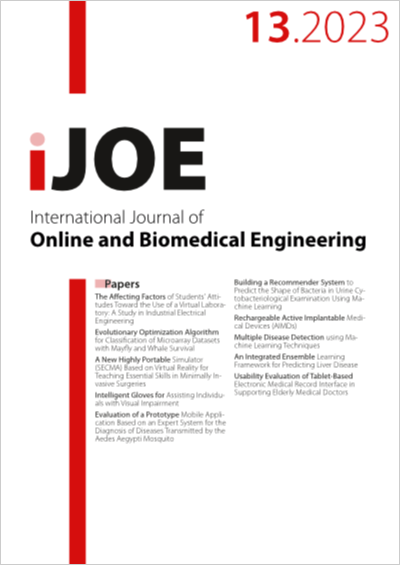Rechargeable Active Implantable Medical Devices (AIMDs)
DOI:
https://doi.org/10.3991/ijoe.v19i13.41197Keywords:
Wireless Power Transfer (WPT), Active Implantable Medical Devices (AIMDs), Basic Restrictions (BR)Abstract
Active Implantable Medical Devices (AIMDs) act as lifesaving devices. They provide electrical signals to tissues as well as perform data-logging operations. To perform these operations, they need power. The battery is the only source for such devices, as they are placed invasively inside the human body. Once the battery drains out, the patient wearing the device has to undergo medical surgery for the second time, where there are many chances of infections, and it could be life-threatening too. If the AIMDs, e.g., pacemakers are designed using rechargeable batteries, then the devices can be recharged regularly, which can increase the life of the device as well as reduce its size. Wireless charging of AIMDs such as ICDs or pacemakers is proposed in this paper using magnetic resonant coupling. The selection of frequency for power transfer is the most crucial part, as the basic restriction (BR) criteria proposed by ICNIRP guidelines and the IEEEC95.1 standard need to be followed, which ensures the safety of the patient. This is suggested by considering some basic restriction parameters, such as specific absorption rate (SAR) and current density, as suggested by guidelines. In this paper, experimentation using two frequencies is shown, i.e., 1.47 MHz (the high frequency) and 62 KHz (the low frequency). For experimentation, goat flesh and saline solution are used. Secondary coil and flesh are dipped in the saline solution. Battery recharging performed at a lower frequency took less time than with a frequency in the MHz range. All BR criteria are fulfilled for both frequencies, so the proposed methodology is safe to use.
Downloads
Published
How to Cite
Issue
Section
License
Copyright (c) 2023 Deepali Amol Newaskar, Dr. B.P. Patil

This work is licensed under a Creative Commons Attribution 4.0 International License.


